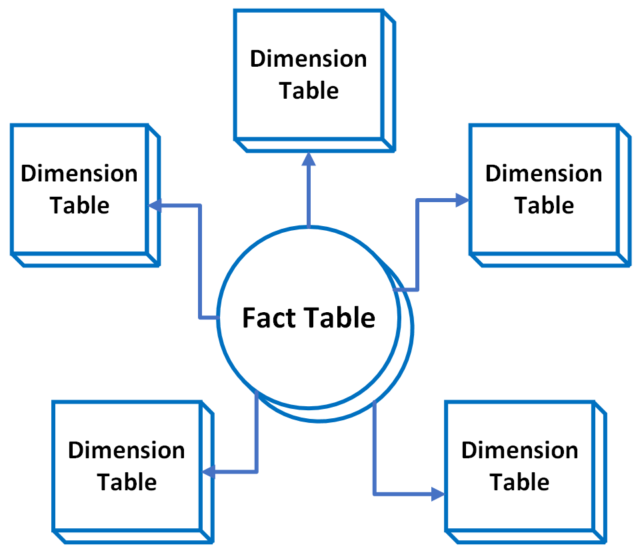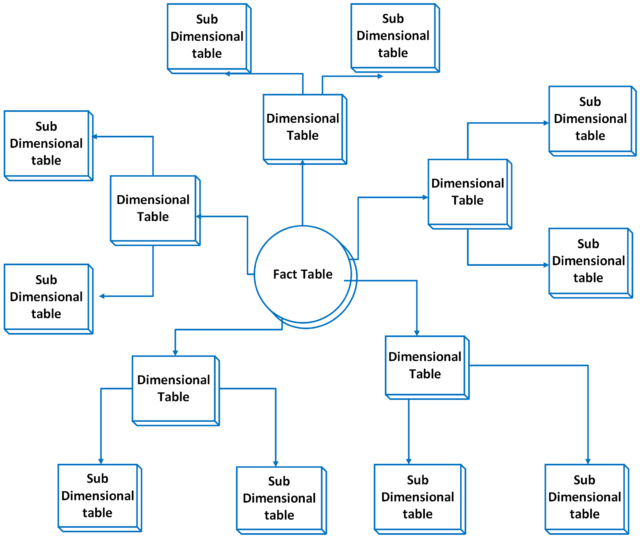In the world of data warehousing and business intelligence, two key concepts are fundamental: Snowflake and Star Schema. These concepts play a pivotal role in designing effective data models for analyzing large volumes of data efficiently. Let’s delve into what Snowflake and Star Schema are and how they are used in the realm of data warehousing.
Snowflake Schema
The Snowflake Schema is a type of data warehouse schema that consists of a centralized fact table that is connected to multiple dimension tables in a hierarchical manner. The name “Snowflake” stems from its resemblance to a snowflake, where the fact table is at the center, and dimension tables branch out like snowflake arms. In this schema:
- The fact table contains quantitative data or measures, typically numeric values, such as sales revenue, quantity sold, or profit.
- Dimension tables represent descriptive attributes or perspectives by which data is analyzed, such as time, geography, product, or customer.

The key characteristics of a Snowflake Schema include:
- Normalization: Dimension tables are normalized, meaning redundant data is minimized by breaking down the dimension into multiple related tables.
- Complex Joins: Analytical queries may involve complex joins between the fact table and multiple dimension tables to retrieve the desired information.
Snowflake Schema is particularly useful when dealing with large and complex datasets. However, the downside is that it can introduce more complex query logic due to the need for multiple joins.
Star Schema
The Star Schema is another widely used schema for data warehousing that consists of a single fact table connected directly to multiple dimension tables. In this schema:
- The fact table contains quantitative data or measures, similar to the Snowflake Schema.
- Dimension tables represent descriptive attributes, similar to the Snowflake Schema.

The key characteristics of a Star Schema include:
- Denormalization: Dimension tables are denormalized, meaning redundant data is included directly in the dimension tables, simplifying query logic.
- Simpler Joins: Analytical queries typically involve simpler joins between the fact table and dimension tables compared to the Snowflake Schema.
Star Schema is known for its simplicity and ease of use. It is well-suited for simpler analytical queries and is often favored for its performance benefits in query execution.
Key Differences
The main difference between Star and Snowflake schemas lies in their approach to storing dimensional data. Star schemas are simpler, with denormalized dimension tables, making them well-suited for fast query performance and simpler analytical queries. On the other hand, Snowflake schemas prioritize data integrity and storage efficiency through normalization but may result in slightly slower query performance due to additional joins.
Conclusion
Both Snowflake and Star Schema are essential concepts in the field of data warehousing, each with its own set of advantages and use cases. Choosing between them depends on the specific requirements of your data analysis tasks, the complexity of your data, and the performance considerations of your analytical queries. By understanding these schemas, you can design effective data models that cater to the needs of your business intelligence initiatives, enabling you to derive valuable insights from your data efficiently.
To Know More, Refer :

